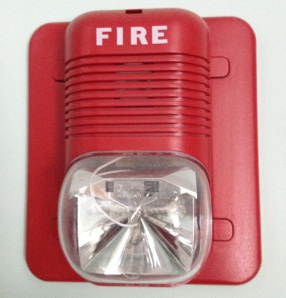"Fire!" Don't Worry, Smoke Alarms to the Rescue!
by Nicky DeBolt
January 28th, 2014

Of course it's 3:00am in the morning when our master bedroom's smoke alarm starts to scream louder than a toddler's temper tantrum. It's late, dark, and I'm half asleep as I wobble around the house looking for the fire threat. Meanwhile, the smoke detector is still yelling at the top of its lungs. With no evidence of a fire, I attempt to disarm the smoke detector before it wakes my one and three year old sons. Embarrassment kicks in when this little device of torture refuses to quiet itself. I decide to resort to the tried and tested method of brute force. I rip the detector off the wall with my Incredible Hulk strength. Standing proudly with the unit in my hand, my wife turns over in bed and sarcastically says, "Way to go Home Inspector."
Now that I have to purchase a replacement smoke detector, I wanted to share some information about how to identify what type of smoke alarms are installed in your home and what types of smoke detectors are on the market. If you want the spoiler, you can jump to the end of this article to find out which smoke alarm this Colorado Home Inspector will purchase. 8)
What kind of smoke detector do I have?
There are two major kinds of smoke alarms on the market. According to the NFPA Ionization smoke alarms are the most popular, making up approximately 90% of the installed smoke detectors in American households. The second is photoelectric smoke alarms making up approximately 5%. The remaining 5% of American households do not have any smoke detectors installed.... scary stuff!
I can attest to the statistics above. I very rarely run into photoelectric smoke detectors while inspecting Colorado homes. Most likely you have ionization smoke alarms installed in your home. You can identify your type of smoke alarm by checking the underside of the case. If it is a ionization smoke alarm it will have "ionization smoke alarm" or "Contains Radio Active Material" printed somewhere on the label.
Which smoke detector is best?
This is a heavily debated topic that changes every time a new article or study is made public. First, let me explain the difference between ionization and photoelectric smoke alarms.
- Ionization smoke alarms
- Ionization smoke sensors are the most inexpensive ($5-$20+) and are available online and in most big box stores. When smoke enters an ionization alarm, ionized air molecules attach to the smoke particles and reduce the ionizing current, triggering the alarm. These sensors will quickly detect sudden burst of flames (kids playing with matches and drops match), but may be slower to react to smoldering fires (Lit cigarette on a couch).
- Photoelectric smoke alarms
- Photoelectric alarms are more expensive ($20-$30+) and are available online or in big box stores. Photoelectric smoke sensors use a light-sensitive photocell to detect smoke inside the detector. When smoke enters a photoelectric alarm, light from a pulsating light source is reflected off the smoke particles onto a light sensor, triggering the alarm. These sensor types work best on smoldering fires and more slowly to flaming fires.
- Dual Sensor (combination) Smoke Alarms
- Dual sensor smoke alarms have both ionization and photoelectric detection built within one unit. It may be obvious that this would be the best unit to purchase, but research has shown that the dual sensor smoke alarms reduce the sensitivity of the ionization side and therefore deems it rather worthless and ineffective.
- The National Fire Protection Association recommends both ionization and photoelectric technologies be in homes. In addition to individual ionization and photoelectric alarms, combination alarms that include both technologies in a single device are available.
- The US Fire Administration recommends that every residence and place where people sleep be equipped with: Both ionization AND photoelectric smoke alarms, OR dual sensor smoke alarms.
Which smoke detector did YOU buy?
I picked up a photoelectric smoke alarm from WalMart for 18 bucks to replace the one I manhandled off of the ceiling. Despite the quicker alert to flaming fires by a ionization smoke alarm, the difference is only a couple of seconds. Research shows that the photoelectric smoke alarm will provide 2-8 minutes warning to get out of the house. In addition, flaming fires are typically started when people are awake so the extra time usually does not matter.
More Home Inspection Posts
How to get more from your Home Inspection for Free- 3 tips
A Frozen Pipe can Create a Stunning Water Feature
"The Ultimate Definition of a Home Inspection"






